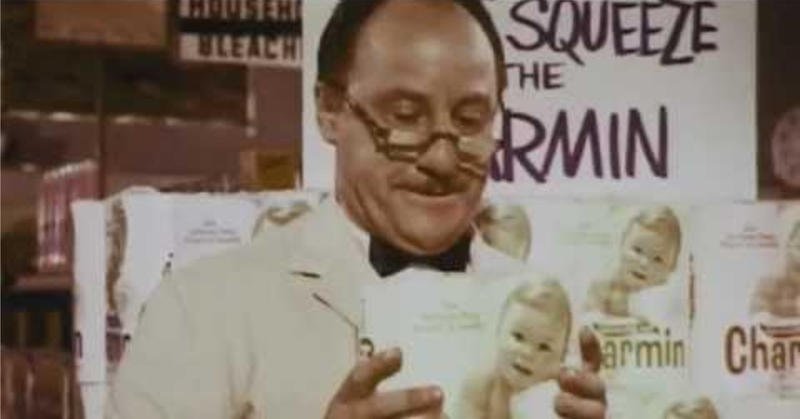Don’t do it
The brilliant Under the Influence podcast recently featured two episodes about “Don’t Do It” advertising. It discusses examples of campaigns that have successfully convinced people not to do something.
One twist on “don’t do it” advertising is an old campaign for Charmin. Although I was familiar with the campaign, I had never considered the psychological jiu jitsu at work until I listened to the podcast.
In the mid-1960s, you really couldn’t talk about toilet paper. You couldn’t use the term on US television until 1975. You had to say “bathroom tissue.” So, the challenge was how to demonstrate Charmin’s softness without talking about it.
The agency thought the best approach was to encourage shoppers to squeeze the product in store – they would feel the softness and be tempted to switch brands and buy it. People squeeze produce, after all. But how do you convince them to squeeze toilet paper?
Moreover, the brand didn’t want to say overtly, “Go ahead and squeeze the Charmin” because that would upset retailers, who generally don’t want shoppers standing around squeezing toilet paper.
So, the brand came up with a fictional supermarket manager named Mr. Whipple, who constantly grew frustrated with shoppers squeezing the bathroom tissue. His tagline in every ad was, “Please don’t squeeze the Charmin.”
In the same way that the phrase “Don’t think of an elephant” compels us to think of an elephant, “Please, don’t squeeze the Charmin” compelled people to squeeze the Charmin. However, the brand also provided itself with plausible cover with retailers. It could always say to them, “We’re not encouraging people to squeeze the product.” Even though they were.
Humor usually doesn’t travel through time very well, so the ads appear painfully corny and dated through our modern eyes. But they were a hit in the 1960s, ‘70s, and ‘80s. By the late 1960s, Charmin was the leading toilet paper in the market. By the 1970s, one poll suggested Mr. Whipple was more recognizable to most Americans than President Jimmy Carter. Ad Age calls it one of the top 100 campaigns of the 20th century.

